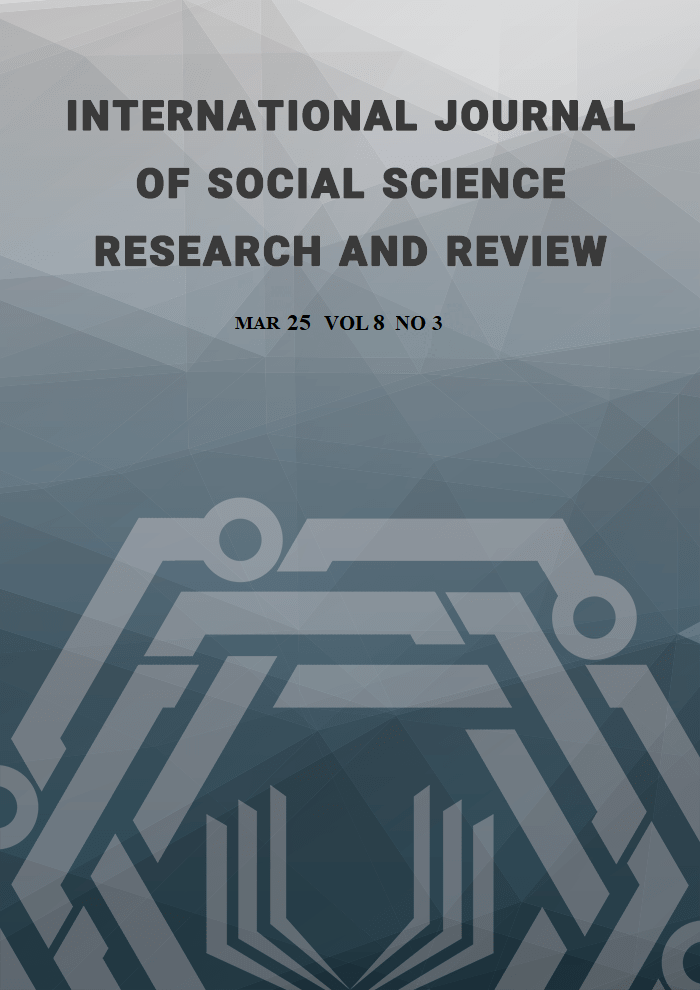Budget Efficiency Analysis Through Collaboration of Infrastructure Development, Human Resource Management, Ecosystem and Risk Management
Abstract
The potential for flooding in the Cimanuk Cisanggarung River is triggered by climate change, watershed degradation, land conversion, and imbalance in infrastructure development using conventional approaches such as raising river embankments, constructing retention ponds, and concreting. It is true that development can protect the sustainability of the ecosystem and at the same time budget efficiency. Ironically, although the issue of budget efficiency is increasingly prominent, many users and implementers of the budget are actually reducing the volume of work as part of finding creative solutions, whereas by involving the community through mutual cooperation and self-management schemes, efficiency can be increased without sacrificing effectiveness; therefore, a more strategic approach is collaboration in infrastructure development with ecosystem-based human resource management and risk management through Nature-Based Solutions (NBS), risk-based spatial planning, adaptive infrastructure, and Community-Based Disaster Risk Management (CBDRM), which not only increase the effectiveness of flood control but also optimize budget efficiency with a community participation-based approach. Budget efficiency in flood control is not only about cutting costs, but also about optimizing resources with a more creative approach, including community involvement, mutual cooperation, and self-management.
References
Agus Taryana (2022). JANE (Jurnal Administrasi Negara), Februari 2022. Volume 13 Number 2 Hal. 302 - 311
Anatan, Lina. & Lena Ellitan. (2007). Manajemen Sumber Daya Manusia Dalam bisnis Modern. Alfabeta. Bandung.
Creswell, J. (2009). Research Design Pendekatan Kualitatif, Kuantitatif, dan Mixed.
Yogyakarta. Pustaka Belajar.
Department of Economic and Social Affairs Département des affaires économiques et sociales, United Nations New York, 2022.
Direktorat Jenderal Kependudukan dan Pencatatan Sipil (Ditjen Dukcapil) Kementerian Dalam Negeri, Rilis Data Kependudukan Bersih (DKB) Semester I Tahun 2024. Hotel Borobudur, Jakarta, pada Rabu, 7 Agusts 2024.
Early Warning System (J-Fews). Jurnal Sumber Daya Air, 10(1), 71–84. http://jurnalsda.pusairpu.go.id/index.php/JSDA/article/download/144/132
Ginting, S., & M. Putuhena, W. (2014). Sistem Peringatan Dini Banjir Jakarta Jakarta-Flood
Justus M. van der Kroef (1951). "The Term Indonesia: Its Origin and Usage". Journal of the American Oriental Society. 71 (3): 166–171. doi:10.2307/595186. Diarsipkan dari versi asli tanggal 10 April 2020. Diakses tanggal 2 Agustus 2008.
Omega Gratia Anita Karisoh Gratia Anita Karisoh, Riane Johnly Pio, Sandra Ingried Asaloei, (2017). Pengaruh Praktek Manajemen Sumber Daya Manusia Terhadap Keberlanjutan Perusahaan Pt. Manado Sejati Perkasa, Jurnal Administrasi Bisnis (Jab): Vol. 5 No. 002 (2017).
Owin Jamasy. (2004). Keadilan, Pemberdayaan dan Penanggulangan Kemiskinan. Jakarta, Traju-Mizan.
Owin Jamasy dkk. (2023) The Impact of Human Resources Management, Collaboration, Partnership with Empowerment Approach Mediating on Sustainability of FMSRB Program Asset Management. (2023) International Journal of Social Science Research and Review. http://ijssrr.com. editor@ijssrr.com. Volume 6. Issue 10. October 2023. Pages: 466 – 480
Owin Jamasy dan Juhary Aly (2018). Relationship Between Job Characteristics, Job Satisfaction AndProductivity In The Citarum River Restorationagencies, West. Java, Republic Of Indonesia IOSR Journal of Business and Management (IOSR- JBM). e-ISSN: 2278-487X, p-ISSN: 2319-7668. Volume 20, Issue 9. Ver. III (September. 2018), PP 10-22 www.iosrjournals.org Pearson, Judy C. (2011). Human Communication. New York: Aptara
Razikin, P., Kumalawati, R., & Arisanty, D. (2017). Strategi Penangulangan Bencana Banjir Berdasarkan Persepsi Masyarakat Di Kecamatan Barabai Kabupaten Hulu Sungai Tengah. 4 (1), 27–39.
Suryono, Agus, (2001). Teori dan Isu Pembangunan, UM-Press, Jakarta. Undang-Undang RI Nomor 24 Tahun 2007,
Yayat Hidaya (2022). Menakar Solusi Kebijakan Pengendalian Banjir di Indonesia, Divisi Konservasi Tanah dan Air, Departemen Ilmu Tanah dan Sumberdaya Lahan, Fakultas Pertanian, IPB University. Jurnal Policy Brief, Vo. 4 No. 4, 2022.
Copyright (c) 2025 Owin Jamasy, Zulkarnain Zulkarnain, Amir Marzuki

This work is licensed under a Creative Commons Attribution-NonCommercial-NoDerivatives 4.0 International License.
Copyright for this article is retained by the author(s), with first publication rights granted to the journal. This is an open-access article distributed under the terms and conditions of the Creative Commons Attribution license (https://creativecommons.org/licenses/by-nc-nd/4.0/).





